To locate null point, deflection battery key K1 is pressed before the galvanometer key K2. Explain why?
To locate the null point in an experiment involving a galvanometer, it is crucial to press the deflection battery key K1 before the galvanometer key K2. Here’s a step-by-step explanation of why this sequence is important:
1. Understanding the Circuit Setup:
- The circuit consists of a battery connected via key K1 and a galvanometer connected via key K2. The galvanometer is used to detect current flow.
2. Pressing Key K1:
- When key K1 is pressed first, it completes the circuit by allowing current to flow from the battery. This is essential for establishing a baseline current in the circuit.
3. Pressing Key K2:
- After pressing K1, when key K2 is pressed, the galvanometer is connected to the circuit with a known current already flowing. This allows the galvanometer to measure the current accurately and helps in locating the null point.
4. Importance of Sequence:
- If key K2 is pressed before K1, the galvanometer is connected without any current flowing through it. When K1 is pressed afterward, a sudden surge of current will flow into the galvanometer. This sudden increase can damage the sensitive components of the galvanometer due to the high current.
5. Finding the Null Point:
- By pressing K1 first, you ensure that the current is stable and controlled when K2 is activated. This stability is crucial for accurately finding the null point, where the galvanometer shows no deflection, indicating that the current through it is zero.
Conclusion:
Thus, the correct sequence of pressing the keys is vital for the safety of the galvanometer and the accuracy of the experiment.
---
- The circuit consists of a battery connected via key K1 and a galvanometer connected via key K2. The galvanometer is used to detect current flow.
- When key K1 is pressed first, it completes the circuit by allowing current to flow from the battery. This is essential for establishing a baseline current in the circuit.
- After pressing K1, when key K2 is pressed, the galvanometer is connected to the circuit with a known current already flowing. This allows the galvanometer to measure the current accurately and helps in locating the null point.
- If key K2 is pressed before K1, the galvanometer is connected without any current flowing through it. When K1 is pressed afterward, a sudden surge of current will flow into the galvanometer. This sudden increase can damage the sensitive components of the galvanometer due to the high current.
- By pressing K1 first, you ensure that the current is stable and controlled when K2 is activated. This stability is crucial for accurately finding the null point, where the galvanometer shows no deflection, indicating that the current through it is zero.
Thus, the correct sequence of pressing the keys is vital for the safety of the galvanometer and the accuracy of the experiment.
Topper's Solved these Questions
- BOOK - DC PANDEY ENGLISHCHAPTER - EXPERIMENTSEXERCISE - Exercise 3.12videos
EXPERIMENTS
- BOOK - DC PANDEY ENGLISHCHAPTER - EXPERIMENTSEXERCISE - Exercise 3.22videos
EXPERIMENTS
- BOOK - DC PANDEY ENGLISHCHAPTER - ELECTROSTATICSEXERCISE - Integer17videos
ELECTROSTATICS
- BOOK - DC PANDEY ENGLISHCHAPTER - FLUID MECHANICSEXERCISE - Medical entranes gallery49videos
FLUID MECHANICS
Similar Questions
To locate null point deflection battery key (K1) ios pressed before the galvanometer (K2) Explanation why?
View SolutionAssertion To locate null defiection the battery key (K1) is pressed first and then the galvanom eter key (K2)
Reason if first K2 is pressed and then as soon as K1 is pressed current suddenly try to increase so due to self induction a large stopping emf is generated in galvanometer which may damage the glavanometer .View SolutionIn the given circuit, calculate the ratio of currents through the battery if (1) Key K1 is pressed, K2 open and then (2) Key K2 is pressed, key K1 is opened
 View Solution
View SolutionThe galvanometer deflection , when key K1 is closed but K2 is open equals θ0 (see figure ) On closing k2 also and adjusting R2 to 5Ω , the deflection in galvanometer becomes θ05 the resistnce of the galvanometer is then , given by [Neglect the internal resistance of battery]:
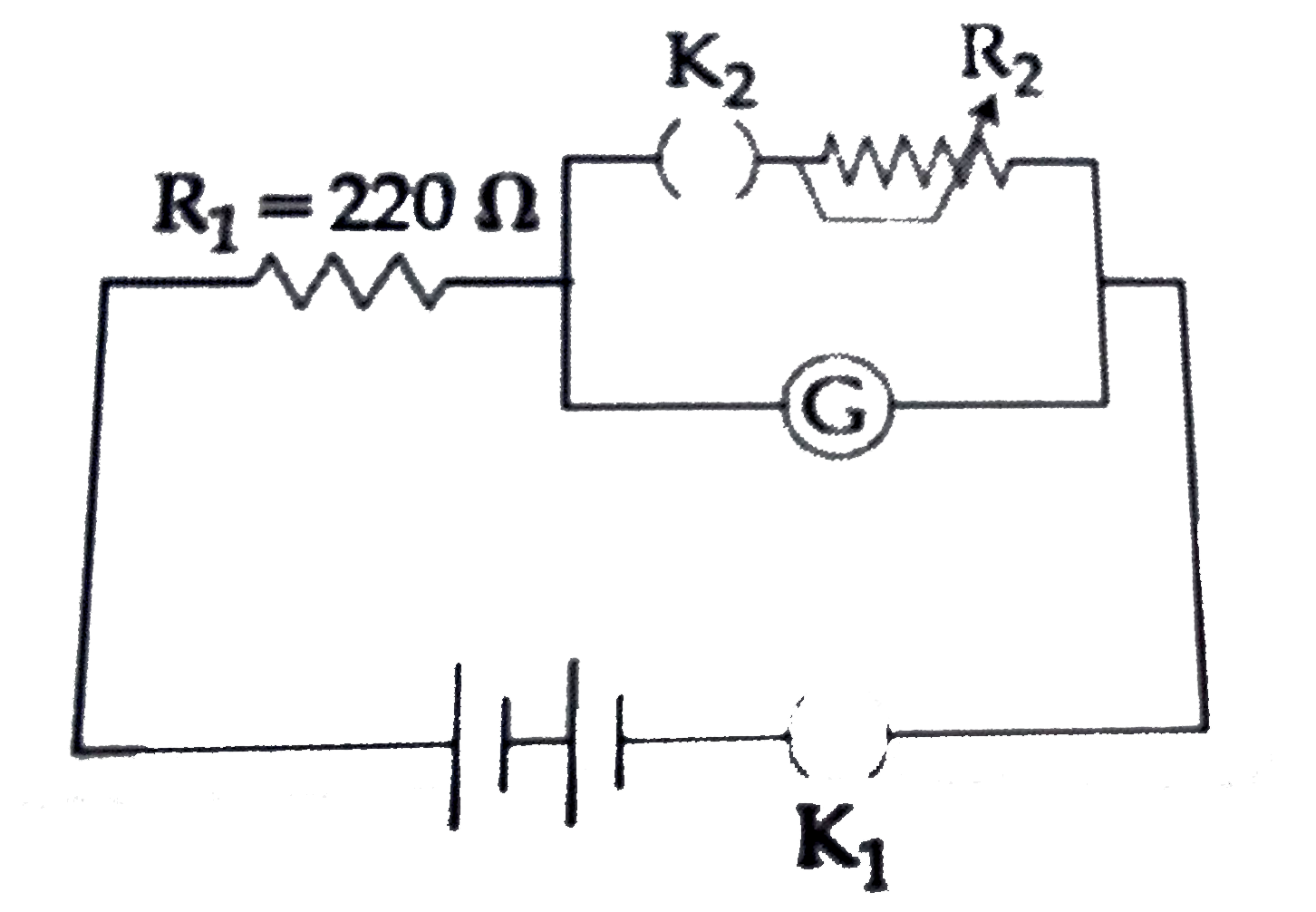 View Solution
View SolutionThe resistances P,Q,R and S in the bridge shown are adjusted such that the deflection in the galvanometer G is zero when both the keys K1 and K2 are inserted. The galvanometer will show a momentary deflection if
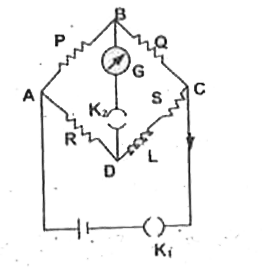 View Solution
View SolutionTwo coils C1 and C2 are kept coaxially as shown the coil C1 is connected to a battery and the coil C2 is connected to a galvanometer. The deflection in galvanometer can be increased by
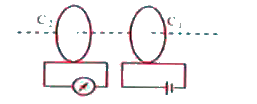 View Solution
View SolutionThe circuit shown here is used to compare the e.m.f. of the two cells E2(E)1>E2. The null point is at C when the galvanometer is connected to E1. When the galvanometer is connected to E2, the null point will be
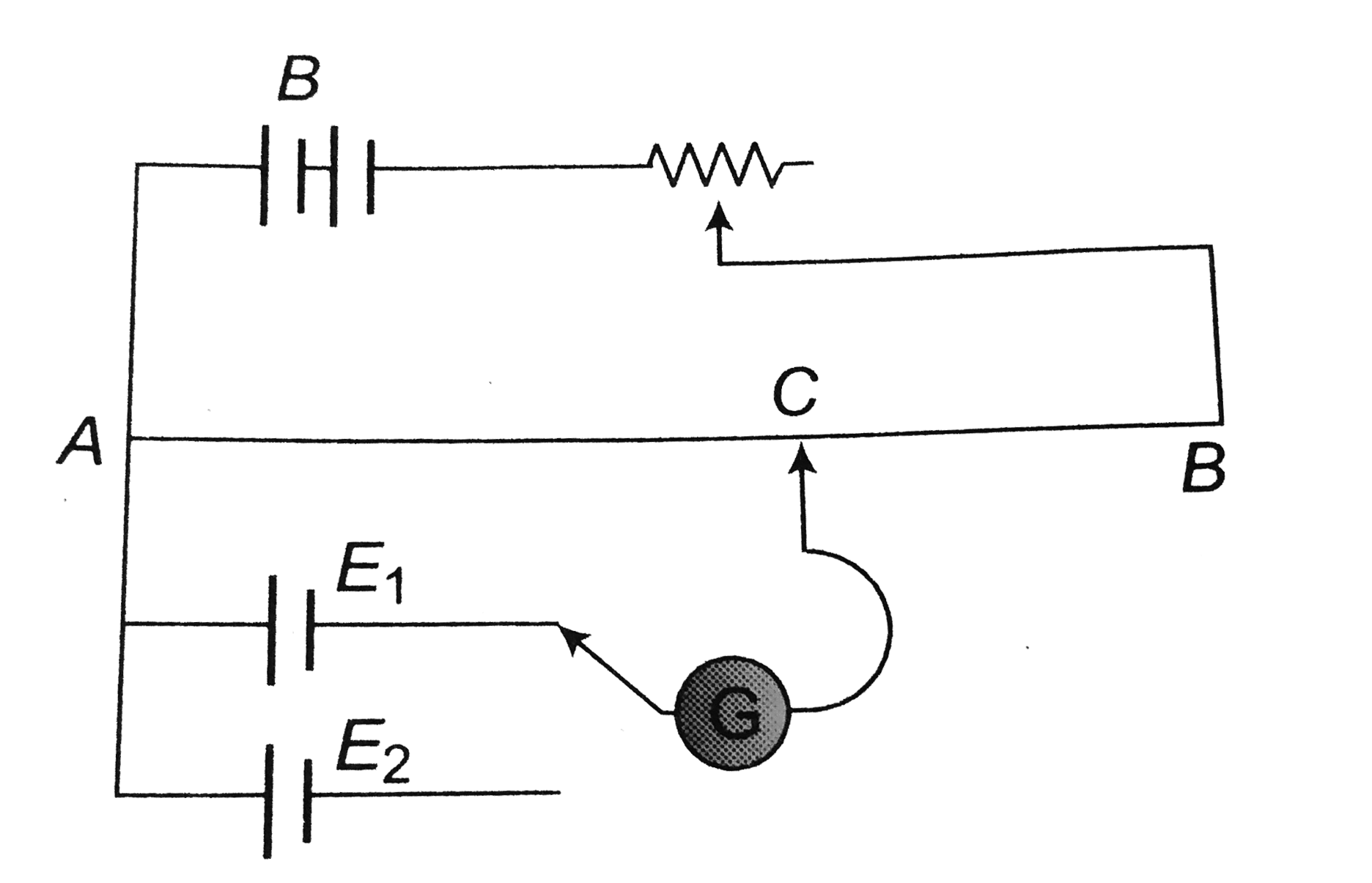 View Solution
View SolutionThe circuit shown here is used to compare the e.m.f. of the two cells E2(E)1>E2. The null point is at C when the galvanometer is connected to E1. When the galvanometer is connected to E2, the null point will be
 View Solution
View SolutionTwo students ‘X’ and ‘Y’ perform an experiment on potentiometer separately using the circuit given: Keeping other parameters unchanged, how will the position of the null point be affected it
(i) X’ increases the value of resistance R in the set-up by keeping the key K1 closed and the key K2 open?
(ii) Y’ decreases the value of resistance S in the set-up, while the key K2 remain open and the key K1 closed? Justify.
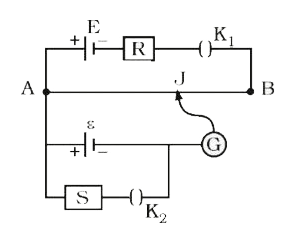 View Solution
View SolutionAs shown in the figure initially switch k1 is open and k2 is closed and deflection of galvanometer is x. Now both switch are closed then the deflection in galvanometer is x/5 (given RH=5Ω). The resistance of galvanometer is
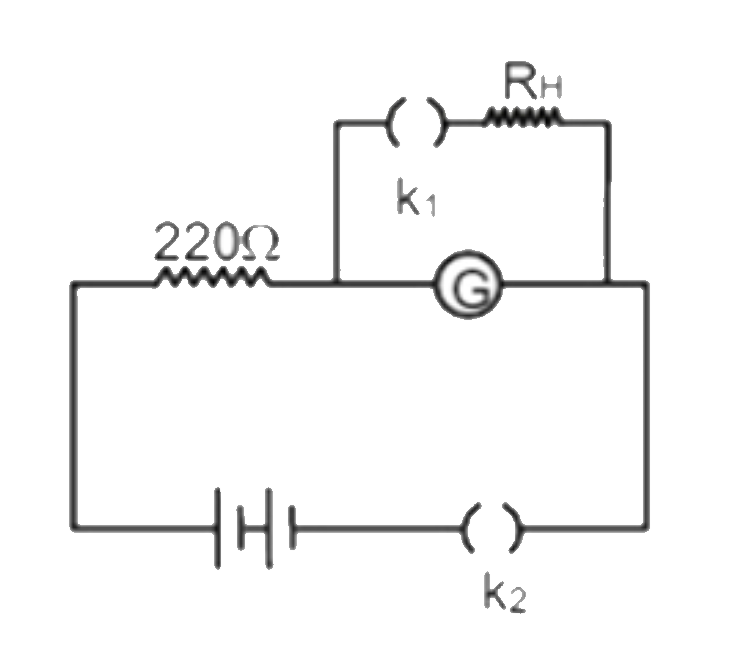 View Solution
View Solution

